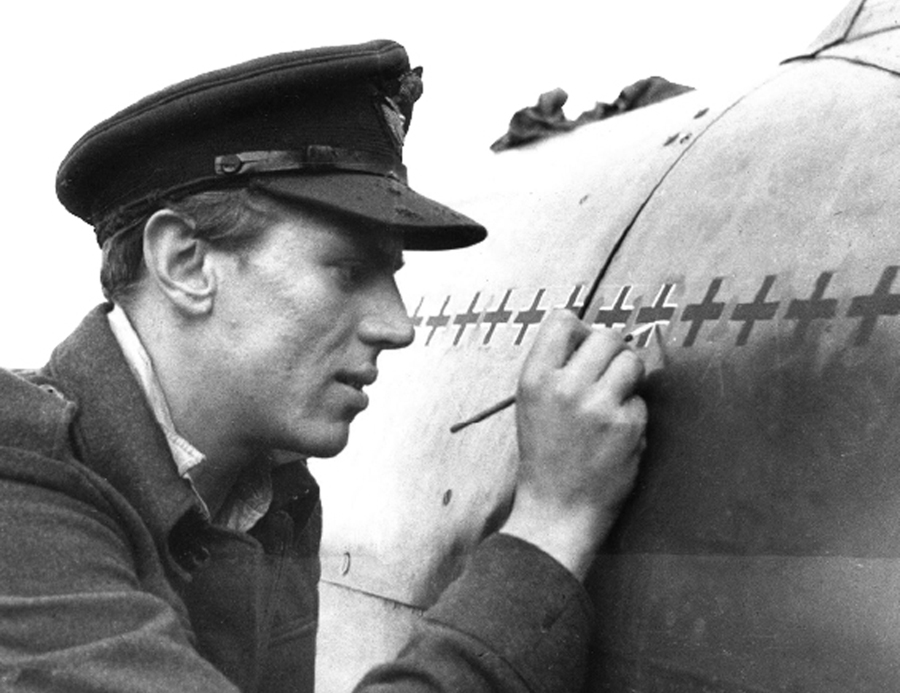The short heroic life of Buzz Beurling
By Lookout on Nov 08, 2018 with Comments 0
Don Gillmor, Legion Magazine ~
George (Buzz) Beurling was credited with 31½ “kills” in the Second World War, more than any other Canadian pilot, and was awarded the Distinguished Service Order, Distinguished Flying Cross and two Distinguished Flying Medals.
He was a gifted pilot, a superb marksman and fearless in battle. He died young, at 26.
These qualities are usually enough to create a mythic figure, but Beurling failed to capture the public imagination the way First World War ace Billy Bishop did, and he wasn’t beloved by fellow pilots or his superior officers.
Born in Verdun, Que., Beurling wanted to fly from an early age, taking his first flight when he was 12. He tried to join the Royal Canadian Air Force but was turned down because he lacked academic qualifications, having dropped out of school at 15.
So he went to England and the Royal Air Force (RAF) took him.
In 1942, he made his reputation as an ace in the defence of Malta. At the age of 20, he had a staggering 27 kills in a few months, more than any other RAF pilot.
Beurling was shot down four times over Malta, the last requiring hospitalization. He was sent to Britain in October 1942 aboard a B-24 transport aircraft that crashed into the sea off Gibraltar. Only a few men survived, among them Beurling, who managed to swim to shore despite the cast on his leg.
Beurling was sent back to Canada to help sell war bonds. He appeared to be the perfect salesman: a dashing fighter ace. He was lionized by the media and mobbed in his hometown, but he didn’t like the war bond campaign and it didn’t like him. At one stop, he told the audience how much he enjoyed killing people. He was openly hostile to a group of girl guides and told a reporter he would want a commission on any bonds he sold if he was to do it again. He wasn’t the kind of self-effacing hero that Canadians warmed to.
Beurling’s superiors hadn’t warmed to him either because of his lack of team discipline; he would break out of formation to pursue targets on his own. He was a loner who buzzed control towers and squadron headquarters (hence the nickname), making everyone nervous.
At the end of the war, Beurling had difficulty adjusting to civilian life. In 1948, he was recruited by the Israeli Air Force to fly P-51 Mustangs. He didn’t make it to Israel. On the way, he crashed his Noorduyn Norseman plane while landing in Rome. It was his tenth and final crash in which he died, and there was talk of sabotage.
His funeral was held in Rome and his widow, other family and friends didn’t attend. His coffin was stored in a warehouse for three months with a small plaque that read “Colonel Giorgio Beurling.” He was eventually buried in the Protestant Cemetery in Rome. In 1950, he was re-interred in a military cemetery at the foot of Mount Carmel near the city of Haifa.
Reprinted courtesy of the Legion Magazine
www.legionmagazine.com
Filed Under: Top Stories
About the Author:






